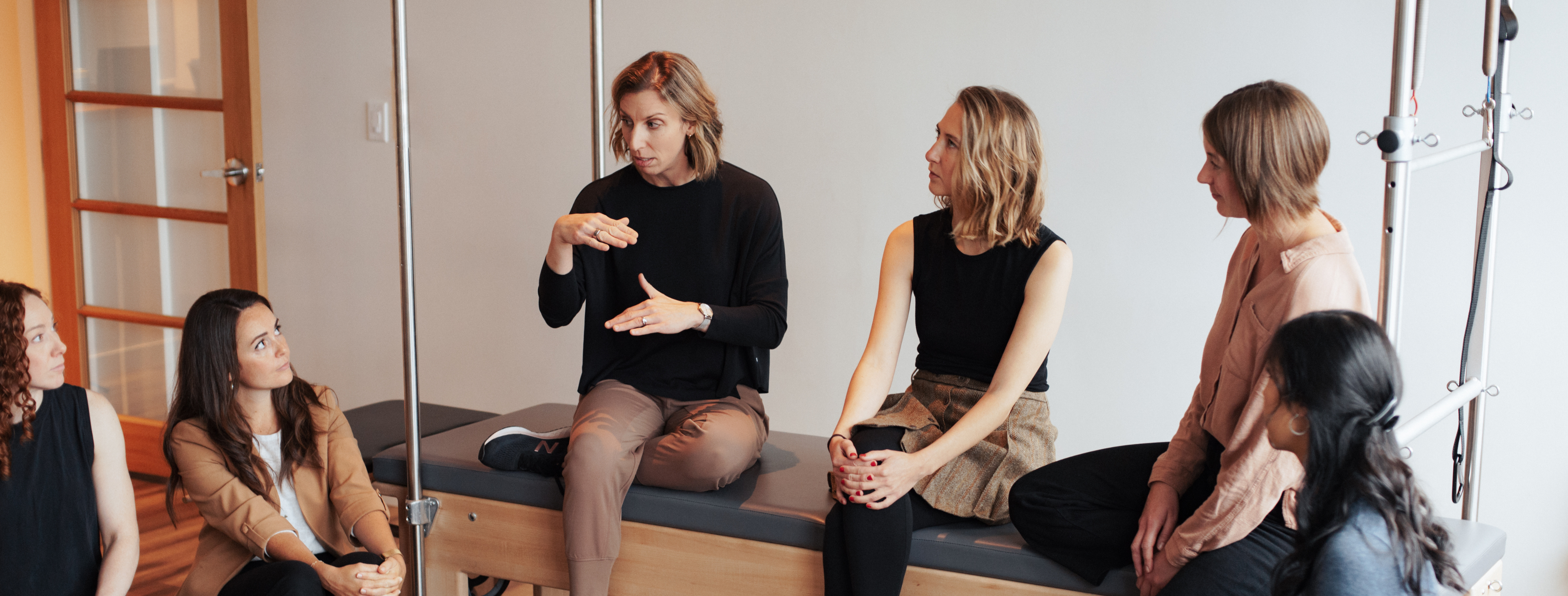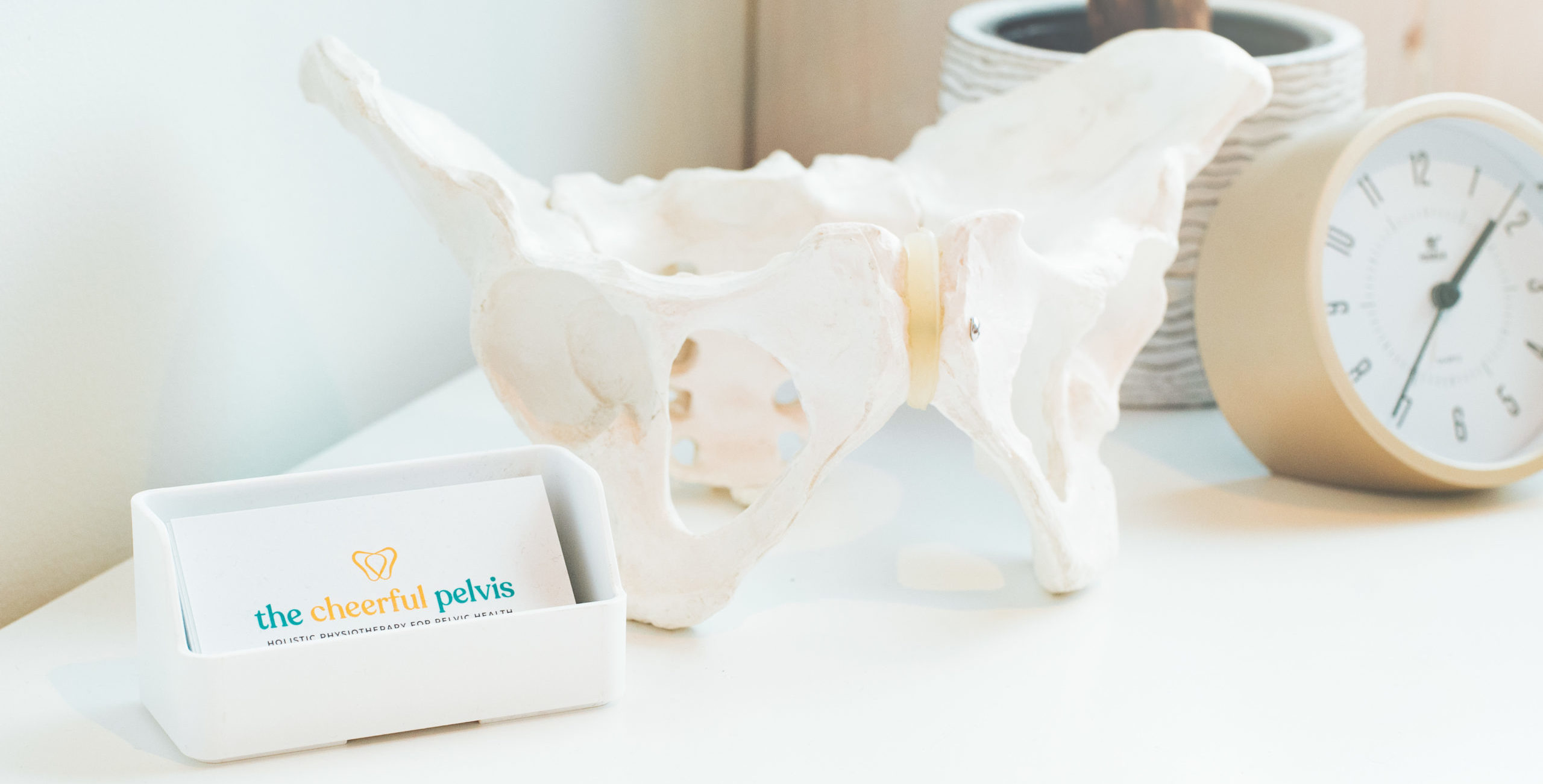Kegel Chairs: Do They Really Work? Here’s What Our Pelvic Floor Physiotherapists Think
June 18, 2024
If you’ve done some Googling around about pelvic floor health, chances are you’ve come across the Kegel chair, also known as an Emsella chair or Kegel throne. The device claims to improve pelvic floor function, continence, and overall well-being by delivering electromagnetic energy that stimulates your pelvic floor muscles into contracting thousands of times during a session. Big promises, to be sure. But does it work?
At the Cheerful Pelvis, we want to make sure that you have all the information you need to make your own informed choice. So we want to address the information that’s out there about the Kegel chair as well as let you know our stance on this product. Let’s dive in.

What the Kegel Chair Claims to Do
Here are some claims about the potential benefits of the Kegel throne:
- It can enhance your pelvic floor strength and endurance
- It can increase your muscle thickness, providing better support for your pelvic organs
- It can improve your continence, sexual function, and quality of life, and decrease the need for continence pads
- It’s safe and effective as a solution for different forms of incontinence
Sounds promising, right? But it’s important to understand the broader context of some of these health claims as well. Let’s take a look at some of the research.
Looking at the Research Behind the Kegel Throne
When we dove into the research behind this pelvic floor device, here’s what we found:
- There’s limited research and the quality varies. Many of the studies behind the electromagnetic technology the chair uses, aka High-Intensity Focused Electromagnetic (HIFEM) technology, are small-scale and not super rigorous. They often don’t take into account other factors that might improve pelvic health conditions, like exercise, behaviour, and lifestyle changes.
- There are other variables to consider. Participants in these studies sometimes undergo other medical treatments at the same time, which makes it difficult to draw a conclusion about the impact of HIFEM treatment alone. The current studies don’t control for other variables, and it’s possible that the improvements could have been related to a factor other than HIFEM treatment.
- There’s a potential for bias in how the data is gathered. Data-gathering on HIFEM tech is often done through self-reported questionnaires, which is not the most reliable methodology when it comes to medical research. It’s not clear whether the study subjects paid for their own treatments (which can be quite expensive at $1800 or more); if they did, they might self-report differently if they were hoping for their investment to pay off. The studies also lumped multiple types of pelvic floor dysfunction together in their reporting, so it’s not evident to us which types of situations and conditions this treatment would be most effective for.

Our Conclusion about the Kegel Chair
Here’s what we think. Although the current research indicates some promising results, we have a long way to go before recommending it as a treatment.
We believe that more research is needed to fully understand whether this technology is really effective, and it needs to be properly compared against other well-established treatments, like pelvic floor muscle training, in an accurate way. It also needs to be tested against a placebo or sham group to assess its effectiveness against a control group. We would also like to see studies done with methodological rigour for specific conditions, like pelvic pain and different types of incontinence, rather than a study that lumps them all together.
It’s really important to consider the cost-benefit of this type of treatment. For something that can cost in the ballpark of $1800 or more for a full treatment plan (and not currently covered by extended medical insurance), and may not even deliver results, it may not be worth the price, particularly when less expensive and proven treatment methods are available.
While early research looks promising, we continue to recommend pelvic floor muscle training, with the addition of general exercise as the best treatment for improving continence and pelvic floor strength. This type of physio work also delivers additional systemic benefits to our clients (whereas the Kegel chair is a passive treatment that does not offer these).
Overall, we wouldn’t recommend the Kegel chair as a first-line treatment to our clients; however, in some cases, it may be an option in addition to the pelvic floor exercises we do always advise. For example, if a client finds it difficult to commit to exercises and there are no financial barriers to undergoing Kegel chair treatments, the chair may be a bridge to allow the client to improve their pelvic floor function to a degree that gets them back to activity and exercise. If you’re interested in the Kegel chair, we’re happy to provide you with more information specific to your situation to help you make an informed decision.
Want more information or need support with your pelvic health?
We’re just a call or an email away: hello@thecheerfulpelvis.com | 604-879-6046
New clients, get matched with a physio here! If you’re an existing client, book an appointment here.
